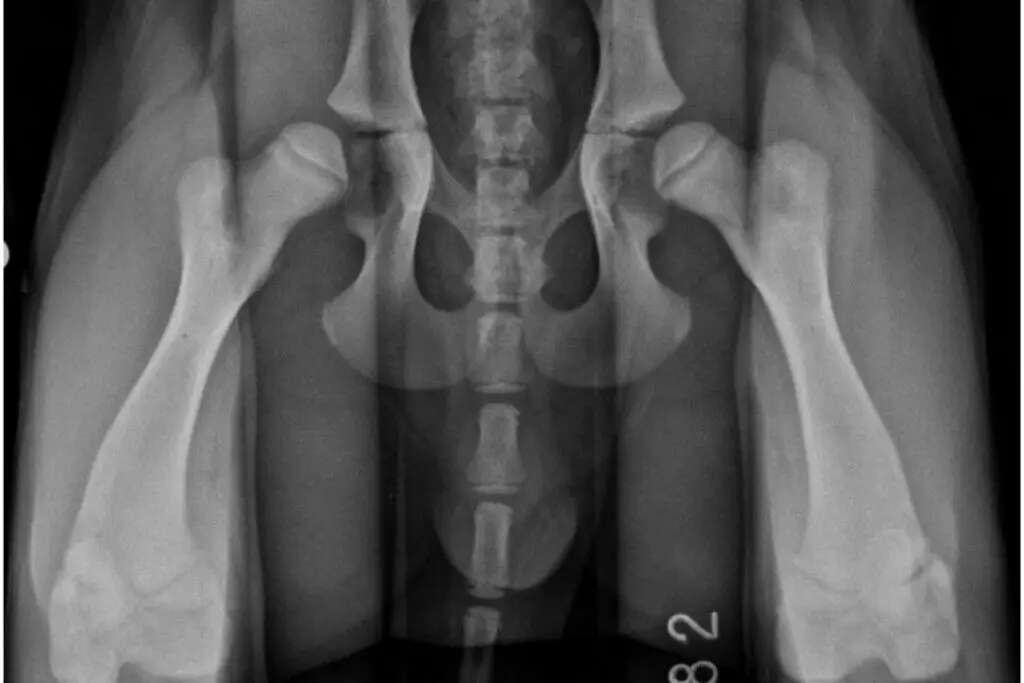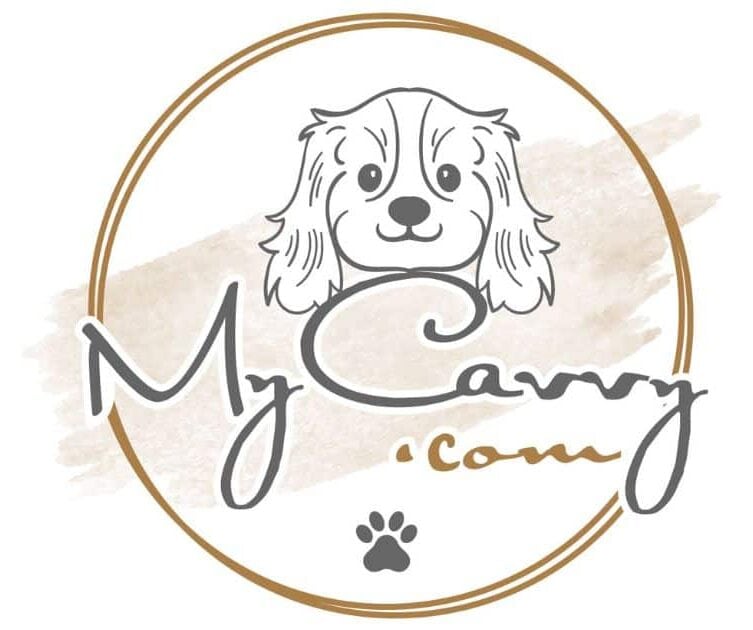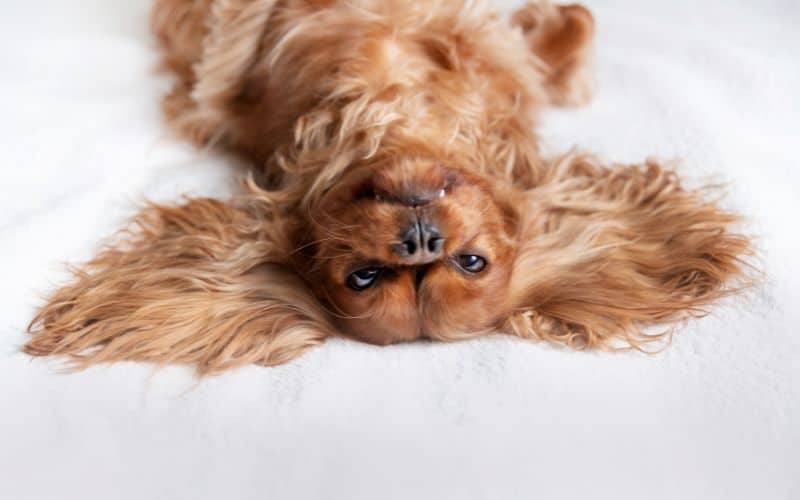Hip dysplasia is prevalent in all breeds of dogs, and is also common in Cavalier King Charles Spaniels. But how do you know if your Cavalier is more susceptible to hip dysplasia, and how do you prevent it?
Hip dysplasia is caused by increased body weight during the critical early postnatal period. It is sufficient to alter the course of hip development and result in measurable degenerative changes in adulthood.
Increased body weight is not the only reason for hip dysplasia, there are many factors that can cause the condition or even elevate the chances of getting hip dysplasia.
Hip Dysplasia in Young Cavaliers
The word dysplasia actually means abnormal development, so when your Cavalier is a young puppy, the condition starts, and as they develop and grow, the dysplasia gets steadily worse.
In a healthy Cavalier, without hip dysplasia, the ball joint of the leg bone (also known as the femoral head) fits into the socket of the hip bone, and the tight ligaments attached to both the leg bone and hip bone keep them in place (a bit like a bungee cord).
In a Cavalier puppy that will suffer from hip dysplasia later on in life, the ligaments that hold the femoral head in the hip socket are quite loose, and so the femoral head rubs around inside the socket. This starts within the first few weeks of the young pup’s life and is not yet noticeable.
As the femoral head rubs inside the socket joint the ball part flattens out and the socket is filled slightly causing it to no longer sit in the socket as comfortably as it did before. This forces the femoral head outward and away from the pelvis and stretches the ligaments.
At this point, the patient will be in considerable pain, and this constant rubbing will cause inflammation and eventually osteoarthritis in the joint. Usually, hip dysplasia is bilateral, which means it affects both sides of the hip joint and is rarely seen on one side only.
Remember that hip dysplasia is not just confined to Cavalier King Charles Spaniels, other breeds also suffer from the problem. I remember my childhood dog Samson, he was a beautiful Old English Sheepdog, and he suffered terribly from hip dysplasia.
Here are a few other breeds that suffer from the disorder:
- Great Danes
- Golden Retrievers
- German Shepherds
- Rottweilers
- Old English Sheepdogs
- Saint Bernards
- Pugs
- Basset Hounds
- French Bulldogs
Like all the breeds in the list above, the genetics of the Cavalier make them pre-disposed to the condition, as they tend to have laxity within the tendons and ligaments that keep their hip joints stable.

Causes
Hip dysplasia is prevalent in certain breeds due to their genetic makeup, but there are some things that can cause hip dysplasia in puppies.
Weight gain is probably to most common reason, as the excess weight on still-young developing bones, muscle, and ligaments will put undue force on the joint causing it to not form correctly.
Increased body weight during the critical early postnatal period is sufficient to alter the course of hip development and as a direct result causes measurable degenerative changes in adulthood.
A few other things blamed for assisting hip dysplasia are the type of exercise given, such as excessive sprinting, for dogs that are not bred to sprint, and even standing on hard floor surfaces for long periods of time. But these claims are not substantiated.
Symptoms
Each dog displays pain differently, some may be in a very small amount of pain and let you know about it every second of the day, but others may be in extreme pain and yet carry on as normal and it is only when an x-ray is performed you see the problem.
However, as a caring dog owner, you will know when your beloved Cavalier is experiencing pain, only you will notice if they are behaving out of character.
Hip dysplasia is not something that appears overnight, the onset is gradual and will take time to become a problem, so your Cavalier won’t limp, or hold up his or her leg, instead, they will just seem very stiff at first, which can make it difficult for you to diagnose. However, there are a few signs to look out for if you suspect that your Cavvy has hip dysplasia:
Swiveling Hips – Is your Cavalier moving their hips from side to side in a strange movement?
Difficulty Standing – Does it take them a while to get up, or attempt different ways to stand when they have been lying down?
Clicking Noise – As they stand, is there an audible bone-clicking sound?
Difficulty Climbing Stairs – Does it take them longer to ascend the stairs, or do they pause a few times on the assent?
Reluctance to Exercise – Do they hide somewhere when you bring out the leash, not wanting to go outside when they used to jump at the chance to go for a walk or run?

When to See a Veterinarian
First and foremost, if your doggie is showing any signs of pain then you should seek the advice of a veterinarian, but also if he or she is exhibiting any of the symptoms above.
The best person to diagnose if their dog is out of character is you, as you know their mannerisms and strange little behaviors. Cavaliers are very clever creatures, and will always have a way of telling you if something is not right.
Treatment
There are a multitude of ways to treat hip dysplasia, some can be done at home, but others can be really invasive, it all depends on the severity of your dog’s condition. Here are a few possible ways to treat hip dysplasia:
Weight Management
This is probably the easiest and most important part of treatment. If your dog is overweight then this can exacerbate the problem, by losing weight or maintaining a healthy weight they have less weight to carry when walking, and so, puts less pressure on the hip joint.
Light Exercise
Light exercise also ties in with weight management, as it can help to bring down their mass and also strengthen the muscles around the hips.
No running, jumping, or chasing is allowed with light exercise, just short regular walks. If your Cavalier finds it too painful to walk, then your veterinarian may suggest physical or hydrotherapy to help with movement and build muscle mass.
Drugs
Some dogs may benefit from light exercise but are in too much pain to actually get up and move around, this is where drugs can help, to temporarily take the pain away so that they can repair the damage naturally.
These drugs could possibly come in the form of anti-inflammatory medications known as NSAIDs (Non-steroidal anti-inflammatory drugs) and may be coupled with some other pain relief that would need to be prescribed by your vet.
Surgery

There are different types of surgery which depend on the age of your Cavalier and also the way the hips are displaced, these surgeries are:
Juvenile Pubic Symphysiodesis (JPS)
This surgery involves a fusion of a part of the pelvis which alters growth so that the location of the ball part of the ‘ball-and-socket’ hip joint is improved.
Triple Pelvic Osteotomy (TPO)
This surgery involves modifying the existing hip joint to improve the capture of the ball by the existing socket.
Total hip replacement (THR)
This surgery involves cutting out the whole of the hip joint. The “ball” is replaced with a metal implant, and the “socket” is replaced with a plastic and metal implant. These implants can be attached to the bone using bone cement or may have a porous coating into which the bone can grow.
Femoral Head and Neck Excision (FHNE)
This surgery involves the femoral head and neck (the “ball” part of the joint) being completely removed allowing a “false joint” to form.
Things to Note
Remember that treatments such as hip dysplasia and other conditions can work out to be very expensive if you are paying for the costs yourself, so it may be wise to get pet insurance at a young age before your Cavvy starts to show any signs of illness or injury.
A lot of new dog owners are not aware that if you insure your dog after an injury or illness, then that will be regarded as a pre-existing condition and you will not be able to claim for that condition for the rest of your dog’s life, and so 100% of the cost for that condition will fall to you.
Hip Dysplasia in Older Cavaliers
As Cavaliers get older and hip dysplasia develops into something that is no longer manageable with drugs, surgery may be the only solution. However, some veterinarians will not operate on dogs older than 8 years old.
The reasoning behind this is that the dog is too old to withstand the rigors of the operation and also the anesthesia, but according to Noel Fitzpatrick (aka The Super Vet), surgery is an excellent option as it will rid your beloved Cavalier of pain within a matter of weeks, and if your Cavalier is otherwise fit and healthy then there should be no need to negate the advantages of surgery.
However, all dogs have a different medical history, so there is no ‘one-size-fits-all’ option. You will need to speak to your local veterinarian or animal surgeon to discuss the viable options for surgery. For example, our Cavvy, Lady, has a small, but manageable heart murmur and so if any type of surgery may be required, we have to discuss the minute details with regards to how long she will be under anesthesia, what type of anesthesia, and so on.
Remember that you have a responsibility to care for your best friend, and if you are in any way unsure of her or his health, then consult a veterinarian as soon as possible.
Sources
For more in-depth knowledge of Hip Dysplasia, please refer to the sources of my information.


4 thoughts on “Hip Dysplasia: Is Your Cavalier Likely To Get It”